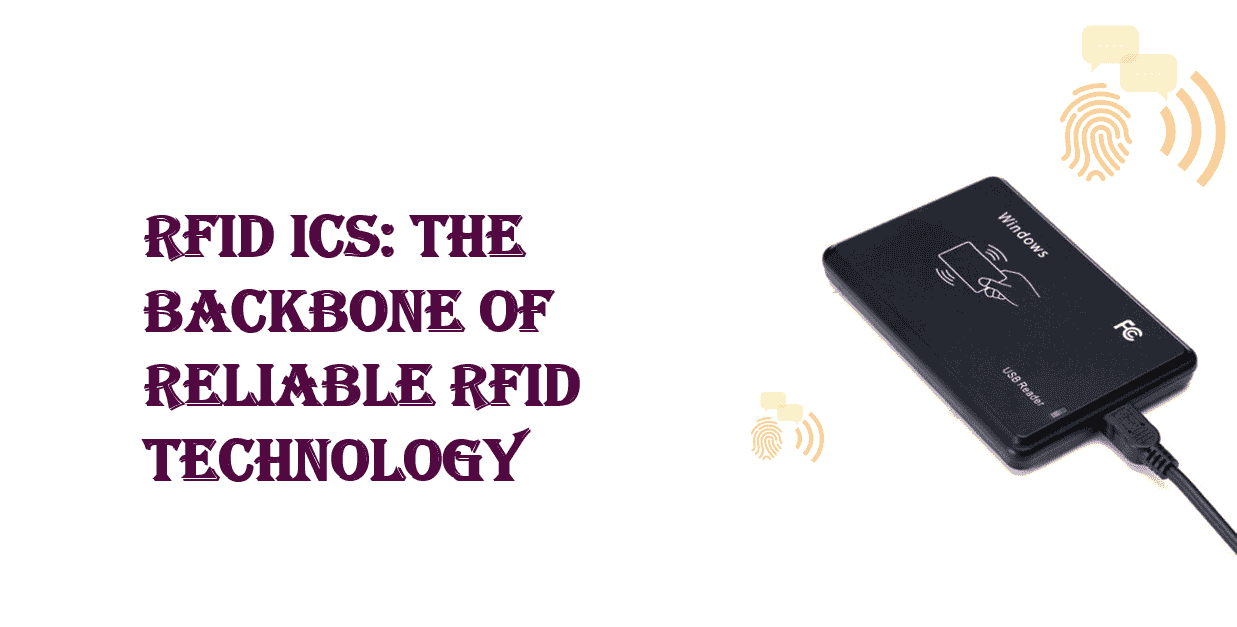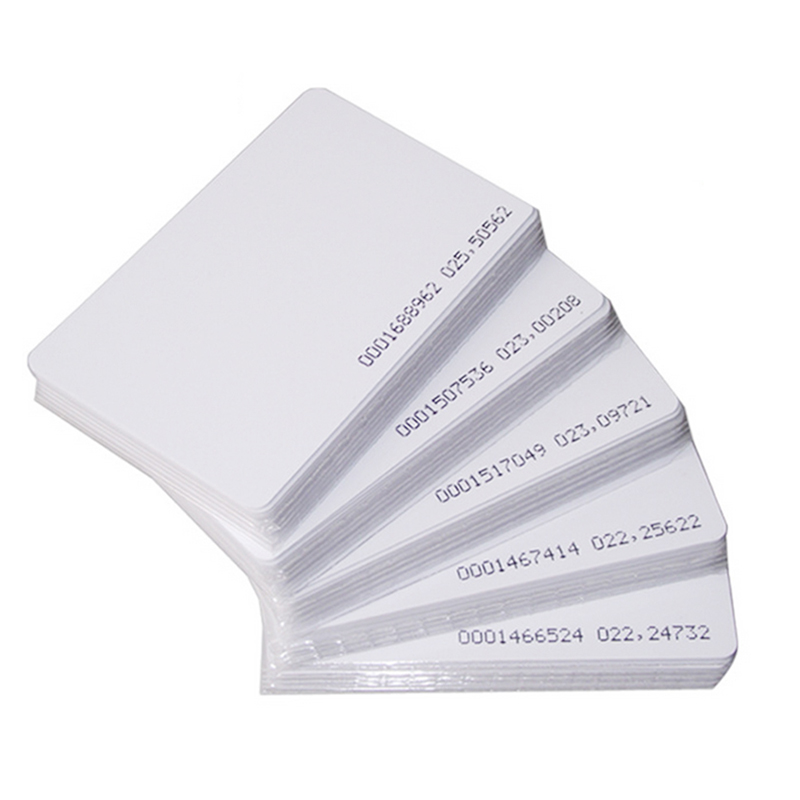RFID ICs- The Backbone of Reliable RFID Technology

RFID ICs: The Backbone of Reliable RFID Technology
Radio Frequency Identification (RFID) technology has revolutionized industries by offering efficient and automated solutions for tracking, identifying, and managing products, assets, and even people. At the core of this transformative technology are RFID ICs (Integrated Circuits), which play a critical role in enabling RFID systems to function reliably and efficiently. As the backbone of reliable RFID technology, RFID ICs are essential components that ensure optimal performance in a wide range of applications—from inventory management to supply chain tracking and beyond.
In this article, we’ll explore the significance of RFID ICs, how they work, and why they are indispensable in modern RFID systems. We’ll also discuss the role of RFID integrated circuits and the essential RFID components that make RFID technology so effective.
Table of Contents
- Introduction
- What Are RFID ICs?
- Key Roles of RFID ICs in RFID Systems
- The Role of RFID Integrated Circuits in Different Applications
- Why RFID ICs Are the Backbone of RFID Technology
- Conclusion
What Are RFID ICs?
RFID ICs, or RFID integrated circuits, are specialized microchips designed to enable RFID tags to communicate with RFID readers through radio waves. These integrated circuits are embedded within RFID tags or labels and serve as the "brain" of the tag. They contain all the necessary circuitry for storing data, modulating and demodulating signals, and ensuring communication between the tag and the reader.
An RFID IC typically consists of several key components, including an antenna, a microchip, and an interface that allows the tag to be powered by either a passive, active, or semi-passive power source. Passive RFID ICs, for example, rely on energy from the RFID reader to operate, while active RFID ICs have their own internal power source, enabling them to broadcast signals over greater distances.
Key Roles of RFID ICs in RFID Systems
1. Data Storage and Identification
The primary function of an RFID integrated circuit is to store data. Whether it's product information, asset identification numbers, or other critical details, RFID ICs securely store the data in non-volatile memory. When an RFID tag is scanned, the RFID IC transmits this stored information to the reader. This is essential for identifying and tracking objects in real time.
2. Communication and Signal Processing
RFID ICs are responsible for modulating and demodulating radio signals. In passive RFID systems, the IC receives a radio frequency (RF) signal from the reader, powers up, and transmits the stored data back. In active RFID systems, the IC continuously emits signals to provide real-time tracking of assets or products. This seamless communication between the tag and reader ensures that data can be quickly and accurately transmitted over various distances.
3. Security and Data Integrity
Many RFID ICs are equipped with encryption and security features to ensure that the data stored within the tag cannot be tampered with. This is especially crucial in applications where the integrity of the data is paramount, such as in supply chain management, healthcare, and access control. These RFID components help prevent unauthorized access to sensitive information.
4. Power Management
Power consumption is a significant concern in RFID systems. Passive RFID ICs draw power from the reader’s signal, while active RFID ICs come with a battery for longer range communication. RFID ICs are designed with power efficiency in mind, ensuring that they can operate effectively while consuming minimal energy.
The Role of RFID Integrated Circuits in Different Applications
RFID ICs are integral to a wide variety of industries, enabling a range of applications that improve efficiency, reduce human error, and enhance security. Here are just a few of the ways RFID components are used across different sectors:
1. Supply Chain and Inventory Management
In the retail and logistics industries, RFID integrated circuits play a key role in inventory management. RFID tags embedded with ICs are used to track goods as they move through the supply chain. With RFID technology, companies can quickly scan large volumes of inventory without the need for manual checks, ensuring accurate stock levels and reducing the risk of errors or theft.
2. Access Control and Security
RFID technology is widely used in access control systems, where RFID ICs in identification cards or badges allow for seamless, contactless entry to secure areas. This eliminates the need for physical keys and enhances security by enabling real-time monitoring of entry and exit points.
3. Asset Tracking
RFID ICs are also crucial for tracking high-value assets in sectors such as healthcare, manufacturing, and warehousing. By embedding RFID integrated circuits in equipment, tools, or even documents, organizations can monitor the location and status of assets in real time, reducing loss and improving operational efficiency.
4. Smart Tags in Consumer Goods
Smart labels equipped with RFID ICs are used in consumer goods for both tracking and interaction purposes. For instance, RFID tags in clothing, electronics, or even food items provide important data about the product’s origin, production, and expiration. These ICs enhance consumer experiences by providing detailed information via RFID readers and mobile apps.
Why RFID ICs Are the Backbone of RFID Technology
The RFID IC is indispensable in modern RFID systems for several reasons:
-
Reliability: The precision and dependability of RFID ICs ensure that RFID systems work seamlessly, whether for tracking packages, managing inventory, or providing secure access. Their ability to function in harsh environments and still maintain communication with readers makes them essential for real-world applications.
-
Scalability: RFID technology can scale to meet the needs of various industries. The versatility of RFID components allows for large-scale deployments without sacrificing accuracy. RFID ICs can handle large volumes of data, making them ideal for environments like warehouses, hospitals, and airports.
-
Cost-Effectiveness: As RFID technology has matured, the cost of RFID ICs has decreased significantly, making them affordable for businesses of all sizes. Lower manufacturing costs and improved efficiency have made RFID a practical solution for a wide range of applications.
-
Customization: RFID ICs come in various forms and configurations to suit different requirements. From high-memory ICs for detailed data storage to low-power ICs for simple identification tasks, businesses can choose the right RFID components for their specific needs.
Conclusion
RFID ICs are the unsung heroes of the RFID world, acting as the foundation of reliable, efficient, and secure RFID technology. These RFID integrated circuits enable seamless communication, data storage, and power management in various applications, from supply chain management to asset tracking and beyond. As the technology continues to evolve, RFID ICs will remain a vital part of RFID systems, driving innovation and improving efficiency across multiple industries. Whether you're looking to implement RFID for inventory management, asset tracking, or secure access control, the role of RFID components cannot be overstated.
Related Products
Here are some relevant stats and facts that you can incorporate into the article on RFID ICs to give it more depth and authority:
1. Global RFID Market Growth
- The global RFID market is projected to reach $19.5 billion by 2028, growing at a compound annual growth rate (CAGR) of approximately 14.3% from 2021 to 2028. This growth is driven by the increasing adoption of RFID technology across various industries, including retail, logistics, and healthcare.
(Source: Fortune Business Insights)
2. RFID Tags and ICs in Retail
- The use of RFID tags in retail for inventory management and asset tracking is growing rapidly. According to a study by Zebra Technologies, 84% of retailers are expected to adopt RFID technology by 2026. The primary drivers for this adoption include improving inventory accuracy and reducing stockouts.
(Source: Zebra Technologies)
3. Inventory Management Efficiency
- Retailers that have implemented RFID technology report a 50% improvement in inventory accuracy and a 20% reduction in out-of-stock items. These improvements are largely due to the reliability of RFID ICs in tracking goods in real time.
(Source: National Association of Retail Marketing Services - NARMS)
4. Cost Savings in Supply Chain
- A study by Intel revealed that RFID systems can reduce supply chain costs by up to 30%, thanks to improved visibility, faster inventory management, and enhanced accuracy in tracking goods. This cost reduction is directly linked to the performance of RFID ICs, which ensure data integrity and communication reliability.
(Source: Intel Corporation)
5. RFID in Healthcare
- In healthcare, RFID tags equipped with RFID ICs are used for tracking medical equipment, medications, and patients. According to AIDC (Automatic Identification and Data Capture), RFID technology in healthcare has reduced the incidence of lost equipment by as much as 60%, improving both operational efficiency and patient safety.
(Source: AIDC)
6. Increased Range with Active RFID ICs
- Active RFID ICs, which come with their own battery power source, can provide tracking over distances of up to 100 meters or more, whereas passive RFID ICs typically offer read ranges from 1 to 10 meters. This extended range makes active RFID ideal for tracking high-value assets and larger-scale applications.
(Source: RFID Journal)
7. RFID and Security
- RFID ICs play a key role in security applications. For example, access control systems using RFID tags are widely adopted in industries like government, banking, and healthcare. According to ABI Research, over 1.2 billion RFID-enabled access control cards are expected to be in use by 2025.
(Source: ABI Research)
8. Global Adoption in Logistics
- In the logistics sector, 85% of logistics companies are expected to use RFID technology for tracking goods and vehicles by 2025. RFID ICs help streamline operations, reduce human error, and optimize delivery times.
(Source: Logistics Management Magazine)
9. RFID Tagging in Manufacturing
- According to a study by GS1, 40% of manufacturers worldwide are already using RFID technology for tracking parts and products throughout the production process. RFID ICs allow manufacturers to maintain precise records, streamline workflows, and ensure quality control.
(Source: GS1 Global Standards Organization)
10. RFID Tagging in the Food Industry
- The global market for RFID tags in food tracking is expected to reach $1.1 billion by 2025, as RFID systems help ensure traceability and food safety. RFID ICs embedded in food packaging can monitor product conditions, such as temperature, and provide consumers with detailed product information.
(Source: MarketsandMarkets)




